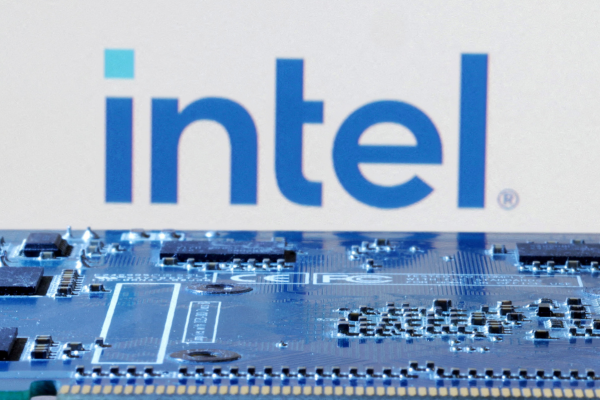How procurement can harness the power of artificial intelligence and machine learning
Sponsored by Amazon Business
The rise of artificial intelligence (AI) and machine learning (ML) is having an impact on many aspects of how we live and work. For procurement professionals, this offers the prospect of more efficient processes, a greater understanding of buying habits and, ultimately, reduced prices.
Amazon has been making use of AI and ML for over two decades, and its use is also embedded into Amazon Business, meaning business buyers can take advantage of its capabilities. “Data analytics is driven by AI, and AI has started doing things that were traditionally thought humans need to be involved, which is pattern matching, learning, and creating insights. We have taken those aspects, which are very valuable, and built them into our custom Large Language Models,” says Rajiv Bhatnagar, Director, Amazon Business.
One way is through improving the search experience and product discoverability for administrators and buyers. Amazon Business’s AI-powered product recommendations can help buyers find the same or comparable items based on past purchases, but at lower prices or with discount availability, often through the convenience of ‘Subscribe and Save’ or quantity discounts for bulk orders.
The use of AI here means buyers can benefit from this kind of insight without having to go through time-consuming manual research and comparisons. “With the emergence of Large Language Models and scalable vector databases, we can create simplified procurement shopping experiences from a simple customer ask,” explains Matt Sterling, senior software development manager at Amazon Business.
“Imagine you’re an operations manager needing HVAC part replacements while at a work site. You can simply ask Amazon Business, via the Amazon Business mobile app, for a large number of replacement parts, have confidence they fit specifications of previous parts you have purchased via an interactive confirmation, and complete your order with a simple ‘confirm’ in less than minute.”
AI is also being used to help companies derive greater insight into their buying patterns, through Amazon Business Analytics and Spend Visibility (a Business Prime feature). This allows businesses to automatically analyze data for timely, data-driven insights that support better decision-making, identifying what has been spent and with which suppliers. Organization can then use these insights to shape strategy, consolidating spend with fewer providers, for instance, or inviting suppliers to put forward their best price. Crucially, this can lead to immediate cost savings that can also be tracked over time, allowing procurement to demonstrate the impact it has had and the value it has delivered.
Another application is in helping procurement teams to mandate buying policies when other people outside of the function may buy items directly. Here, AI can ensure intelligent classification of suppliers, so buyers only see those that meet certain requirements and comply with buying policies. These could be around the use of local suppliers to reduce carbon emissions associated with travel, or those that meet certain criteria around sustainability or ownership; from a veterans, LGBT or small enterprise background, for instance.
“A lot of times the buyer doesn’t even have context on what their administrators want them to buy, or what their guidelines are,” says Sterling. “Using Large Language Models, we can create experiences that make a buyer feel truly connected to the organization they are a part of; not just following guidelines but participating in their organization’s broader mission.”
AI and ML can also help procurement deliver a better service to its internal customers. Amazon Business makes use of chatbots to help answer common customer questions, meaning if people have a query about an item they can get an immediate response or be transferred to a human. This is a constantly changing area, and in the near future customers may not even need to explain the issue at all, as the AI functionality will know exactly what stage they are at, and what kind of support they will require.
AI is also helping procurement itself, by assisting with some of the back-office activities associated with the procurement lifecycle. “Large orders, invoices and purchases often require lengthy processes and supplier support engagement,” points out Sterling. “These engagements can range from matching invoices, tracking down orders via customer support, downloading and analyzing reports, sending a few terse emails, and likely calming down a few frustrated employees.
“AI improvements are enabling better methods for Amazon Business to support procurement administrators in these activities, getting them quickly back to value-added activities for the companies they work for.”
All this means procurement professionals can do their job better, delivering greater value for money, more efficiency and additional insight without having to make any investment themselves. With AI and ML embedded into Amazon Business, it means a better buying experience for customers and more spend under management for the business, ultimately leading to cost savings and ensuring spend goes to those suppliers that meet wider company objectives.
For more information on how Amazon for Business could help your organisation, visit business.amazon.com

Business Reporter Team
You may also like
Related Articles
Most Viewed
Winston House, 3rd Floor, Units 306-309, 2-4 Dollis Park, London, N3 1HF
23-29 Hendon Lane, London, N3 1RT
020 8349 4363
© 2025, Lyonsdown Limited. Business Reporter® is a registered trademark of Lyonsdown Ltd. VAT registration number: 830519543





